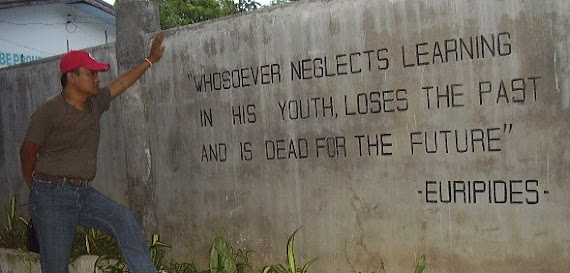
February is Pro-Life month in the Philippines. Pro-life Philippines Foundation together with the Episcopal Commission on Family and Life (ECFL) and Couples for Christ Foundation for Family and Life (CFC-FFL) are spearheading various events nationwide to promote pro-life family values among the people. Near the entrance of the Saint Joseph Cathedral here in San Jose, anti-abortion photo exhibit can be seen by the Mass-goers and the public in general. Series of related activities aimed to highlight the value of the family and sanctity of life were laid by parishes in Occidental Mindoro. On Sunday, February 6, is Pro-Life day in the Philippines.
February as Pro-Life month was declared by the late President Corazon Aquino in 1987 when she issued Proclamation 214 stating, “February is Respect and Care for Life Month”. It is worthy to note that the celebration centers only on the aspects of abortion and euthanasia. While I recognize abortion, euthanasia and death penalty as different concern, all of them point to the same fundamental value: safeguarding the sanctity of life. But here in the Philippines, little is said on an equally important but controversial, issue of death penalty or capital punishment. While Catholics in general are battle-ready to defend our stand on these two life-threatening issues, the issue of death penalty is also part of it and it should not be overlooked in our present pastoral concerns.
Allow me to begin by telling you a story about a man who was sentenced to die by lethal injection in Texas on October 26, 2004. A book called “A Saint on Death Row” by Thomas Cahill centers on Dominique Green, 30, an African-American and the latter’s conversion from an angry and embittered boy to a man of forgiveness, compassion and generosity. Based on the book which was reviewed here, Green created a community among these isolated and desperate men, helping them to forgive, advising them on their legal rights and teaching by his own example. Green’s last message to the author is this: “What is important about a life is not its length but its intensity and direction.” Green maintained his innocence until the end but it is viewed that contributory to his execution was his being poor and black, unable to hire good lawyers and therefore unable to prove his innocence. That’s already Texas, how much more here at home?
With the rising heinous crimes in the country today, specifically the recent brutal killings of car dealers Emerson Lozano and Venson Evangelista, some sectors of society clamor for the re-imposition of death penalty. But many believe that the poor and the powerless will only be victimized by said proposal of re-imposition. In the 1998 data of the Catholic Bishops Conference of the Philippines (CBCP) showed that more than half of the convicts earned less than the government mandated minimum wage. In a survey conducted among 425 convicts that year, 105 or 24.7% were agricultural workers, 103 were construction workers, 73 were transport workers, and 42 were in workers in sales and services. Only 6% finished college while 32.4 % finished various levels of high school while the remaining did not go to school or have finished only elementary or vocational education. I am sure that this trend stays with death penalty around.
In short, social conditions of poverty and injustice which often provide the breeding grounds for serious crime. With the re-imposition of death penalty we opted not to consider Jesus in our practical and civic decisions and undertakings. Gut-level reactions may cry out for vengeance, but Jesus' example in the Gospels invites all to develop a new and different attitude toward violence. The education we got, especially from Catholic schools and our faith, encouraged us to embody Jesus' message in our everyday tasks as public servants, as citizens.
The United States Catholic Bishops’ Conference (USCBC) in November 1994 issued a statement called “Confronting a Culture of Violence - A Catholic Framework for Action” stating that, "Increasingly, our society looks to...increased reliance on the death penalty to deal with crime. We are tragically turning to violence in the search for quick and easy answers to complex human problems. A society which destroys its children, relies on vengeance fails fundamental moral tests....We cannot teach that killing is wrong by killing....This cycle of violence diminishes all of us—especially our children."
That’s the call from America. Down here in the Philippines, this year’s theme and call for the celebration is, “Filipinos, Unite for Life”.
------
(Photo : Staticbuyit.com)









